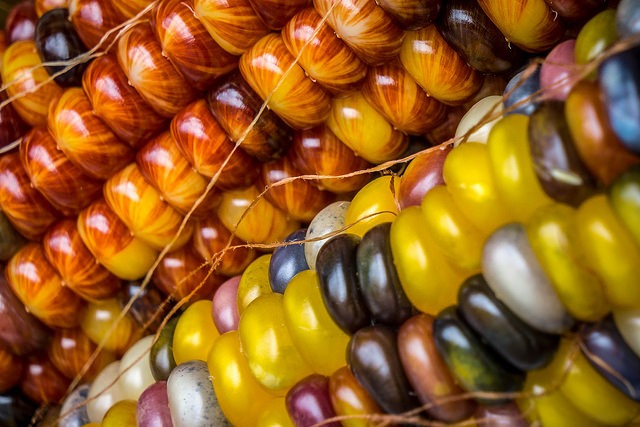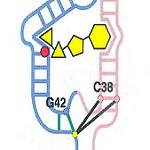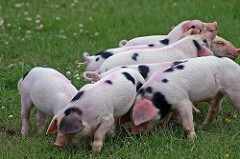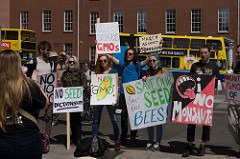
GM/Biotech Crops Report – December 2018
10th December 2018- GM/Biotech Crops Monthly Reports (BELOW) form part of BCPC’s free three-tier Biotech Crops Info service.
- This service also includes a weekly round-up of news from around the globe – see BCPC Newslink GM Crops section.
- Plus – Free access database on over 300 GM/biotech products covering 23 crops in the global market visit BCPC’s GM/Biotech Crops Manual – Register here for free access.
Already registered? Click here
GM/Biotech Crops Monthly Report December 2018
 |
Gene-edited babies |
|---|---|
| Controlling genes with riboswitches A research team from Imperial College London and Warwick University have developed a system that allows CRISPR-Cas9 edited genes to be switched on and off by external stimuli. I wonder what uses this could be put to. More Pic: WSU |
 |
 |
Gastro-enteritis resistant pigs By switching off a single enzyme in pigs, researchers at Missouri University have produced a litter of virus-resistant piglets. Can this technique be applied to some other viral diseases? More Pic: David Morrett |
| Anti-GM stance of Europe weakening? Wheat does not grow well in tissue culture, making genetic improvements difficult but researchers in Japan have used a gene gun for transient expression of CRISPR-Cas9 modifications in mature wheat embryos with a 5% success rate. More Pic: John Wiesenfeld |
 |
 |
New gene discovered to improve crop disease resistance Edinburgh University has discovered a new gene that plants use to fight infection. SRG1 is switched on in response to the presence of nitric oxide, a strong free radical that might be coming from attacking bacteria:. More Pic: Filter Forge |
| Modified camelina again Hydroxyl fatty acids (HFA) are found in the seeds of the castor bean plant and are useful in several industrial chemical processes. Castor bean plants are not easy to cultivate but a team at Montana State University have transplanted the genes required for its production into camelina. This gives increased production of HFA and improves the germination of camelina seeds: More Pic:Steve Bridger |
 |
 |
EU policy on gene-editing comes under attack The EU has classified gene-edited products as the same as those that have undergone genetic modification even though there is no novel DNA present. The authors of this report point out that mutation breeding which is not regulated produces far greater changes to the genome than gene editing – a clear inconsistency. Also noted is that gene-edited products from elsewhere in the world are not labelled as gene edited and so can be imported into Europe with impunity – a clear disruption to fair trade:. More Pic: William Murphy |
| A little stress is good for you When researchers at Pennsylvania State University temporarily silenced a critical gene in soybean and then crossed these ‘stressed’ plants with the original stock, the plants grown from the ensuing seed were more vigorous, more resilient and higher yielding. More Picf: Topher McCulloch |
 |
 |
Virus highs |
|---|---|
| I almost forgot Researchers in Spain working on Alzheimer’s disease have identified a gene (STIM1) that seems to be deficient in the brain tissue of sufferers. This could be a route to finding an effective treatment for this growing problem: More Pic: Mariano Cuajao |
 |
THE LATEST ADDITIONS TO THE GM/BIOTECH DATABASE ARE:
-
- • SYHT0H2 – soybean with tolerance of glufosinate and mesotrione herbicides approved for food use in Singapore
• MZHGOJG – maize with tolerance of glufosinate and glyphosate approved for food use in Singapore.
• 3272 – maize with modified alpha amylase content approved for food use in Singapore.
• MON863 – maize with Coleopteran insect resistance approved for food and feed use in Nigeria.
• DAS40278 – maize with tolerance of 2,4-D herbicide approved for food and feed use in Nigeria.
• MON863 x MON810 x NK603 – maize with Coleopteran and Lepidopteran insect resistance and tolerance of glyphosate approved for food and feed use in Nigeria.
• MON89034 x NK603 – maize with Lepidopteran insect resistance and tolerance of glyphosate approved for food and feed use in Nigeria.
• FG72 x A5547 x 127 – soybean with tolerance of glyphosate, glufosinate and isoxaflutole herbicides approved for food use in Iran.
• DAS44406-6 – soybean with tolerance of glyphosate, glufosinate and 2,4-D herbicides approved for food use in Iran.
• DAS68416-4 – soybean with tolerance of glufosinate and 2,4-D herbicides approved for food use in Iran.
• CV127 – soybean with tolerance of sulfonyl urea herbicides approved for food use in Iran.
• FG72 – soybean with tolerance of glyphosate and isoxaflutole herbicides approved for food use in Iran.
• 73496 x RF3 – oilseed rape with tolerance of glufosinate and glyphosate approved for food use in Japan and Taiwan.
• NXI-4T – sugarcane with drought stress tolerance approved for food, feed and environmental use in Indonesia.
• MON87419 – maize with tolerance of glufosinate and dicamba approved for commercialisation in Brazil.
• MON88701 x MON 88913 – cotton with tolerance of glufosinate, glyphosate and dicamba commercialised for food, feed and environment use in Brazil.
• COT102 x MON15985 x MON88913 x MON88701 – cotton with Lepidopteran insect resistance and tolerance of glyphosate, glufosinate and dicamba herbicides approved for commercialisation in Brazil.
• NEW stacked event: T304-40 x GHB119 x COT102 – cotton with lepidopteran insect resistance and tolerance of glufosinate commercialised in Brazil.
- • SYHT0H2 – soybean with tolerance of glufosinate and mesotrione herbicides approved for food use in Singapore
FOR INSTANT ACCESS TO GM BIOTECH MANUAL CLICK HERE (Registration required)
Already Registered? Click here to access

